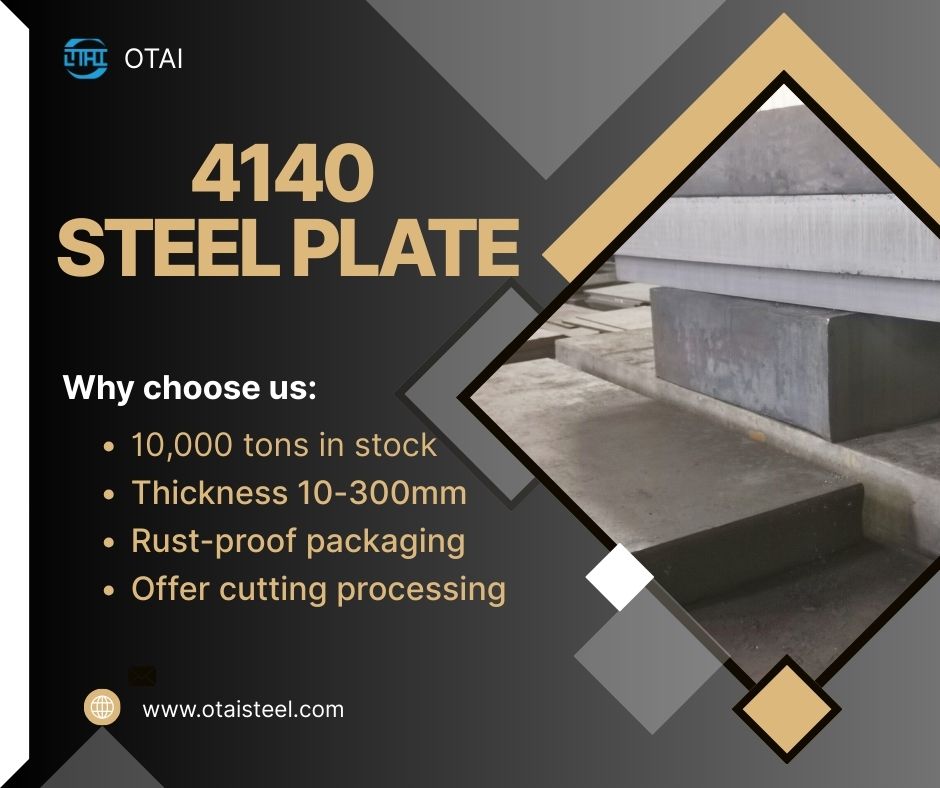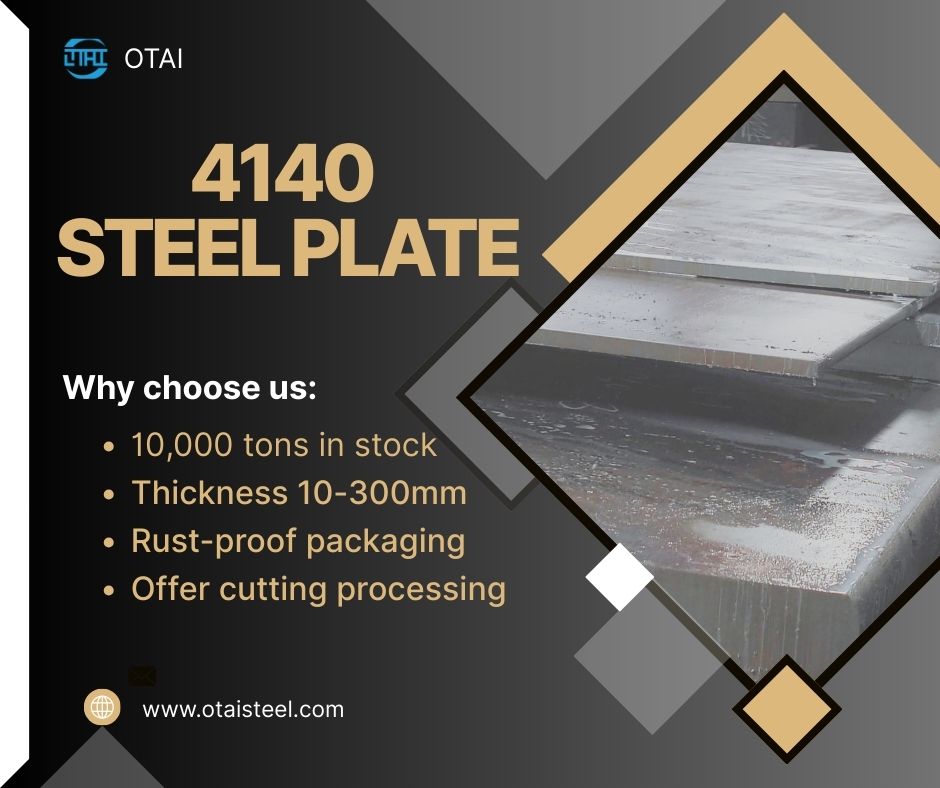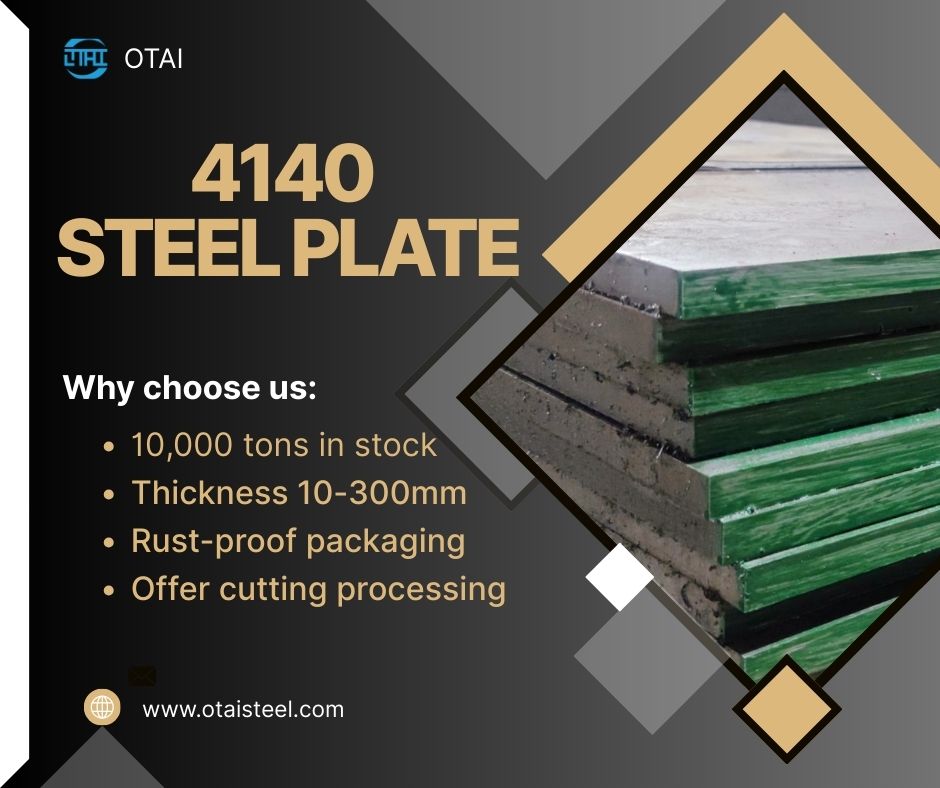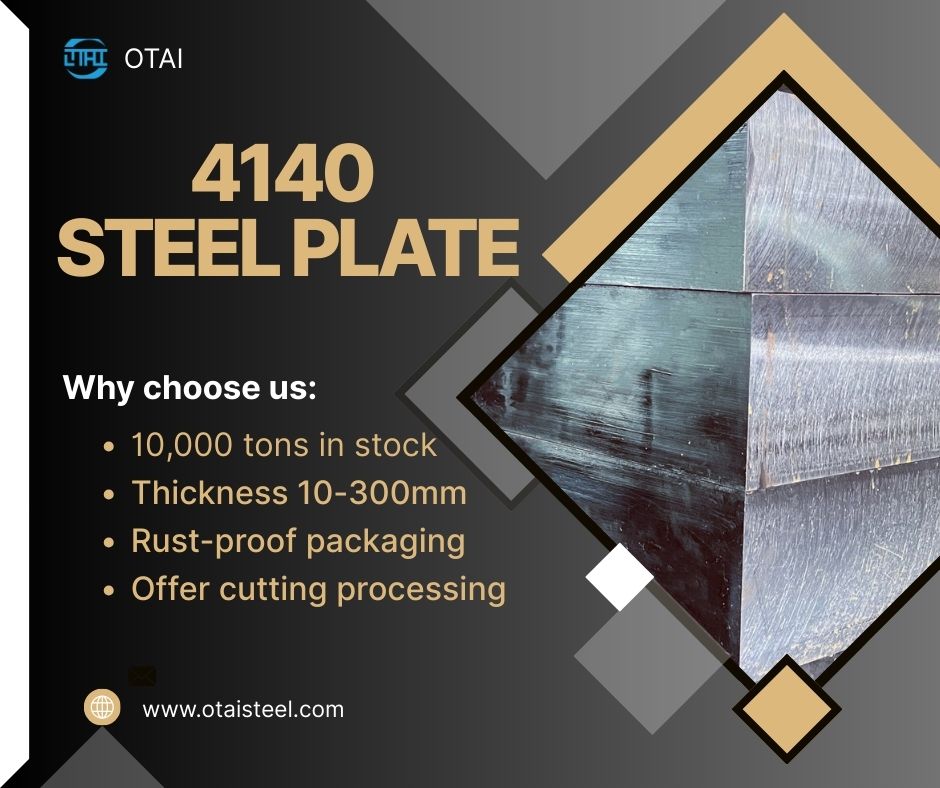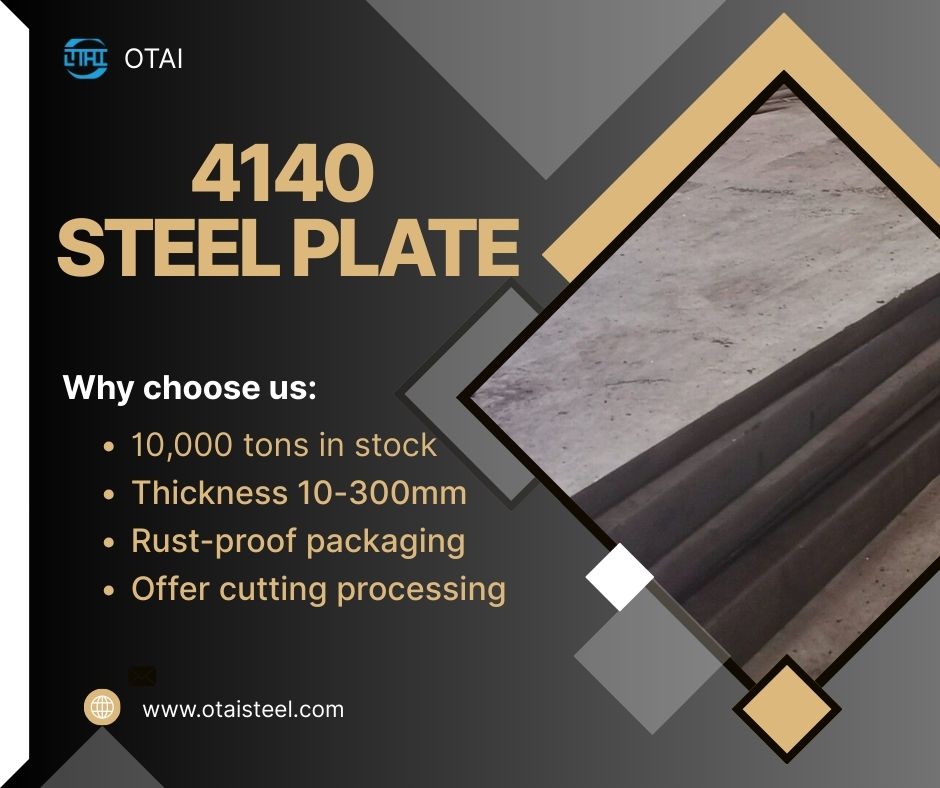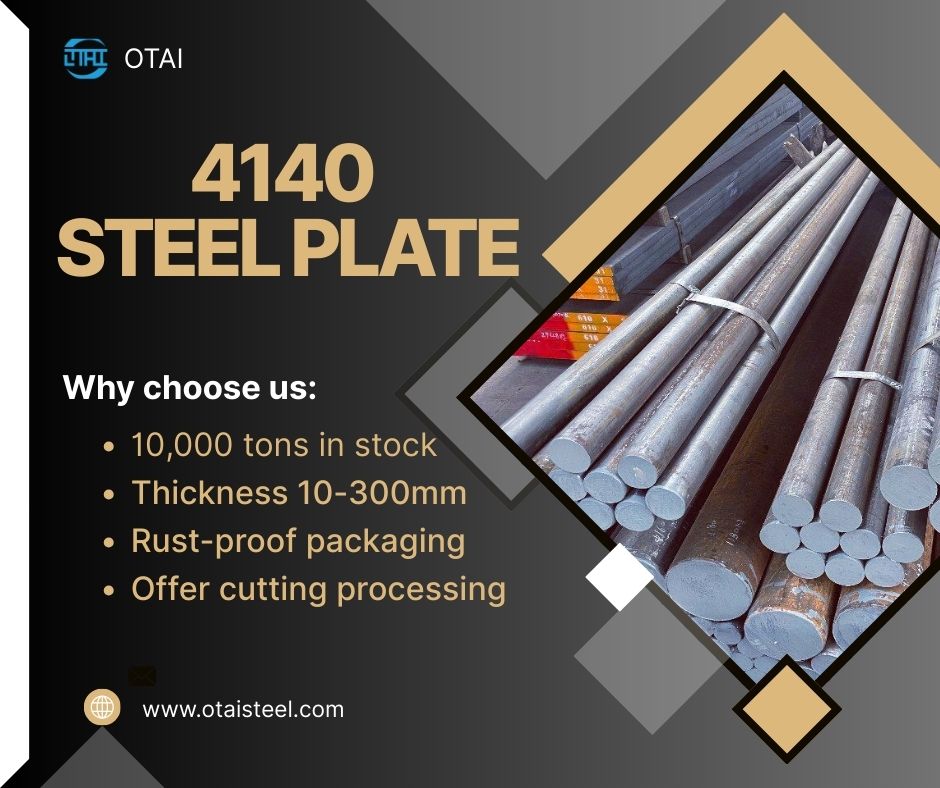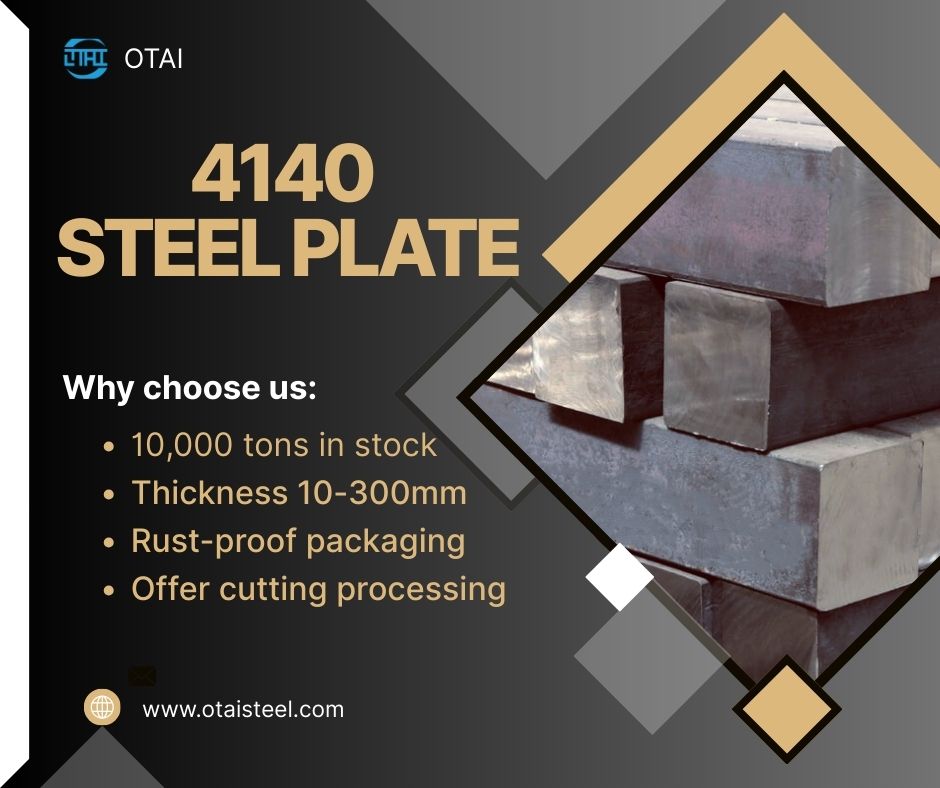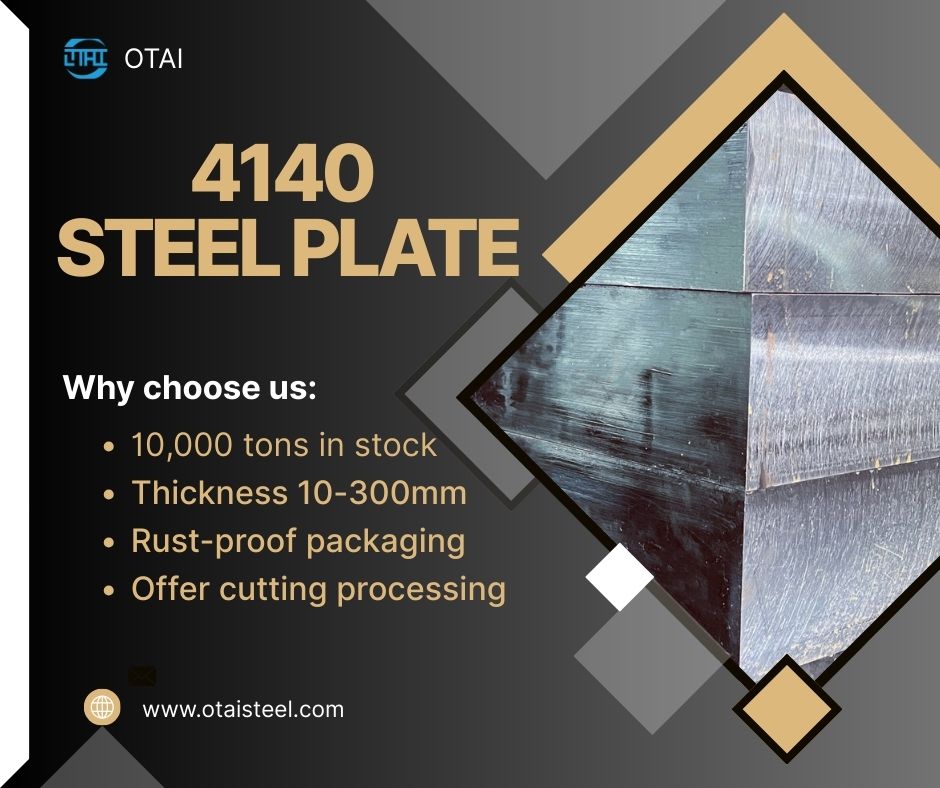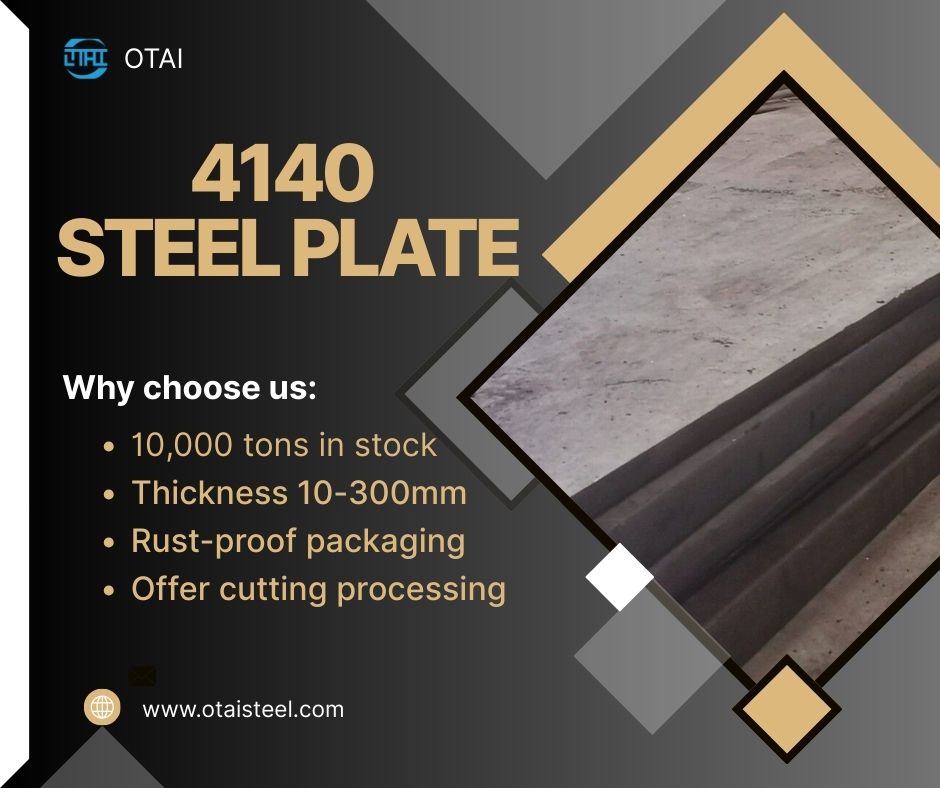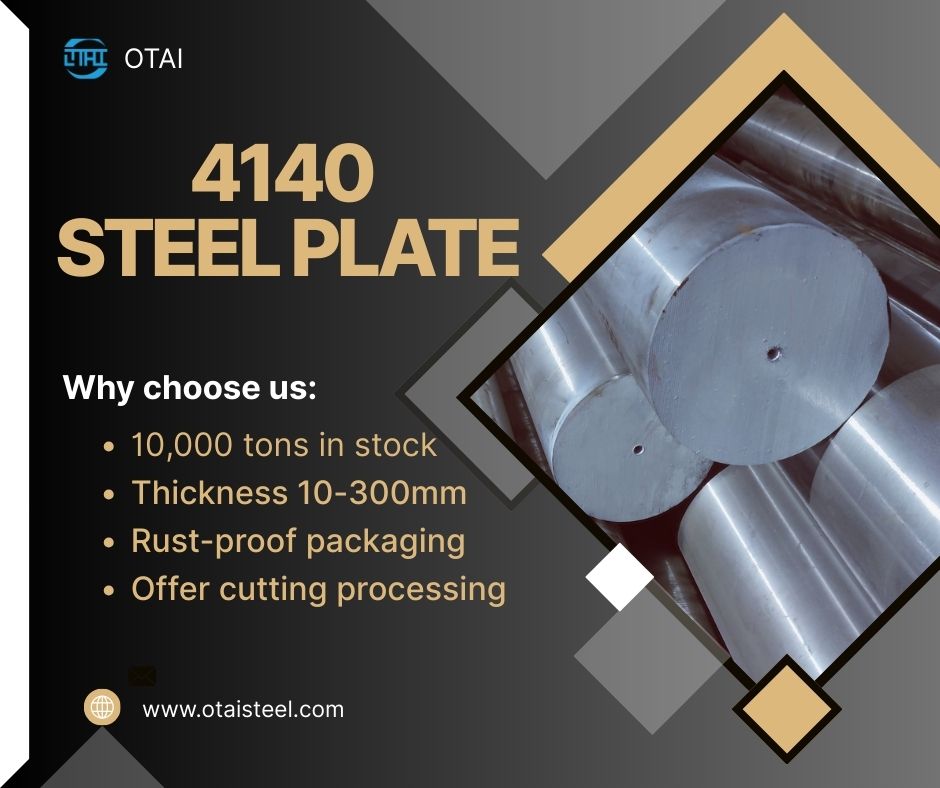 Mechanical and Chemical Properties of 4140 Steel: An In-Depth Look
Mechanical and Chemical Properties of 4140 Steel: An In-Depth Look
4140 steel is a chromium-molybdenum alloy steel known for its strength, toughness, and versatility. It is one of the most commonly used alloy steels in various industries, particularly in the automotive, aerospace, and machinery sectors. In this article, we will explore both the mechanical properties and chemical properties of 4140 steel, as well as how these properties make it suitable for a wide range of applications.
⚙️ Mechanical Properties of 4140 Steel(part 1)
1. Tensile Strength
The tensile strength of 4140 steel typically ranges from 655 MPa to 975 MPa (95,000 to 141,000 psi), depending on the heat treatment. 4140 steel demonstrates high tensile strength, making it ideal for use in components that must endure significant stress without failing. High tensile strength allows 4140 steel to resist deformation under heavy loads, which is critical in automotive parts, industrial machinery, and toolmaking.
2. Yield Strength
The yield strength of 4140 steel is typically around 415 MPa to 655 MPa (60,000 to 95,000 psi), depending on the heat treatment and alloy composition. This is the point at which the steel will undergo permanent deformation, and beyond which it will not return to its original shape. For applications requiring high strength and resistance to permanent deformation, 4140 steel is an excellent choice.
3. Hardness
4140 steel can achieve a Rockwell hardness of around 28-32 HRC in the annealed state, but it can be increased significantly through heat treatment. After processes like quenching and tempering, the hardness can be raised to around 50-55 HRC, depending on the treatment conditions. The high hardness provides 4140 steel with resistance to wear, abrasion, and surface deformation.
⚙️ Mechanical Properties of 4140 Steel(part 2)
4. Toughness
4140 steel is well-known for its toughness, which is the ability of the material to absorb energy and deform without fracturing. This is a critical property for components that must withstand impact or shock loading, such as gears, shafts, and crankshafts. Its toughness also makes 4140 steel resistant to brittle failure under high stress.
5. Ductility and Formability
While 4140 steel is known for its strength, it also retains a degree of ductility. This allows the material to be formed and shaped without cracking, making it suitable for processes such as forging, machining, and welding. The material’s ductility, however, may be reduced as the hardness increases with heat treatment.
6. Impact Toughness
The impact toughness of 4140 steel is another critical mechanical property, particularly in applications that involve dynamic loading, such as in heavy machinery and automotive components. Thanks to its composition, 4140 steel offers good resistance to impact stresses, reducing the likelihood of failure under shock loading.
🔬 Chemical Properties of 4140 Steel(part 1)
1. Chemical Composition
The chemical composition of 4140 steel includes several elements that enhance its mechanical properties:
-
Carbon (C): 0.38% – 0.43%
Carbon is the key element that increases the hardness and tensile strength of steel. However, too much carbon can reduce ductility and weldability, which is why 4140 steel contains a balanced amount of carbon. -
Chromium (Cr): 0.80% – 1.10%
Chromium enhances the hardness, corrosion resistance, and wear resistance of the steel. It also contributes to 4140 steel’s ability to maintain its strength at elevated temperatures. -
Molybdenum (Mo): 0.15% – 0.25%
Molybdenum increases the strength, hardenability, and resistance to heat of the steel. It also improves the steel’s ability to withstand fatigue and creep at higher temperatures. -
Manganese (Mn): 0.60% – 0.90%
Manganese is used to improve the tensile strength and hardness of the steel. It also enhances the steel’s resistance to wear and abrasion. -
Silicon (Si): 0.20% – 0.35%
Silicon is an important element that helps in deoxidation during the steelmaking process and contributes to the steel’s overall strength and hardness. -
Sulfur (S): ≤ 0.040% and Phosphorus (P): ≤ 0.035%
These impurities are kept low to ensure that the steel has the desired mechanical properties. High sulfur or phosphorus can cause brittleness and lower toughness.
🔬 Chemical Properties of 4140 Steel(part 2)
2. Corrosion Resistance
While 4140 steel offers some corrosion resistance due to the presence of chromium, it is not stainless steel. For applications where resistance to rust or oxidation is crucial, additional coatings or surface treatments may be required. For example, 4140 steel can be chrome-plated or phosphated to improve its resistance to corrosion in harsh environments.
3. Heat Resistance
4140 steel has a high heat resistance thanks to the chromium and molybdenum in its composition. It is able to maintain its strength and hardness at elevated temperatures, making it suitable for use in high-temperature applications like forging, dies, and machinery components exposed to heat.
🌍 Applications of 4140 Steel
Due to its combination of mechanical and chemical properties, 4140 steel is widely used in industries requiring high-strength and durable materials. Some of the key applications include:
-
Automotive: Axles, gears, crankshafts, and suspension components
-
Oil and Gas: Drill collars, pressure vessels, valves, and wellhead components
-
Heavy Machinery: Tool holders, machine shafts, pinions, and dies
-
Toolmaking: Molds, cutting tools, dies, and presses
-
Aerospace: Landing gears, engine components, and aircraft structural parts
🌟 Why Choose Otai Special Steel for 4140 Steel?
At Otai Special Steel, we provide high-quality 4140 steel that meets the most stringent industry standards. We offer:
-
🏭 Large Inventory: We keep over 10,000 tons of 4140 steel in stock, available in various forms and sizes.
-
📐 Custom Cutting and Heat Treatment: We offer tailored services to meet your specific needs, including cutting to size and customized heat treatment.
-
🔍 Quality Assurance: We conduct strict testing, including ultrasonic testing (UT), chemical analysis, and hardness verification.
-
🌍 Global Shipping: Fast and reliable worldwide shipping to over 50 countries.
-
💰 Competitive Pricing: We offer affordable pricing without compromising on quality.
❓ FAQ
Q1: What are the mechanical properties of 4140 steel?
A: 4140 steel has high tensile strength (655 MPa to 975 MPa), yield strength (415 MPa to 655 MPa), hardness (28-32 HRC in annealed state), and good toughness and impact resistance.
Q2: What is the chemical composition of 4140 steel?
A: 4140 steel contains carbon (0.38% – 0.43%), chromium (0.80% – 1.10%), molybdenum (0.15% – 0.25%), manganese (0.60% – 0.90%), and silicon (0.20% – 0.35%).
Q3: Is 4140 steel resistant to corrosion?
A: 4140 steel has some corrosion resistance due to chromium, but it is not stainless steel. Additional coatings or treatments may be required for improved resistance in corrosive environments.
Q4: How does heat treatment affect 4140 steel?
A: Heat treatment can significantly improve the hardness and strength of 4140 steel, making it more suitable for demanding applications such as machinery components and tooling.
Q5: What are the key applications of 4140 steel?
A: 4140 steel is widely used in automotive parts, oil and gas components, machinery, tooling, and aerospace applications due to its excellent mechanical and chemical properties.
